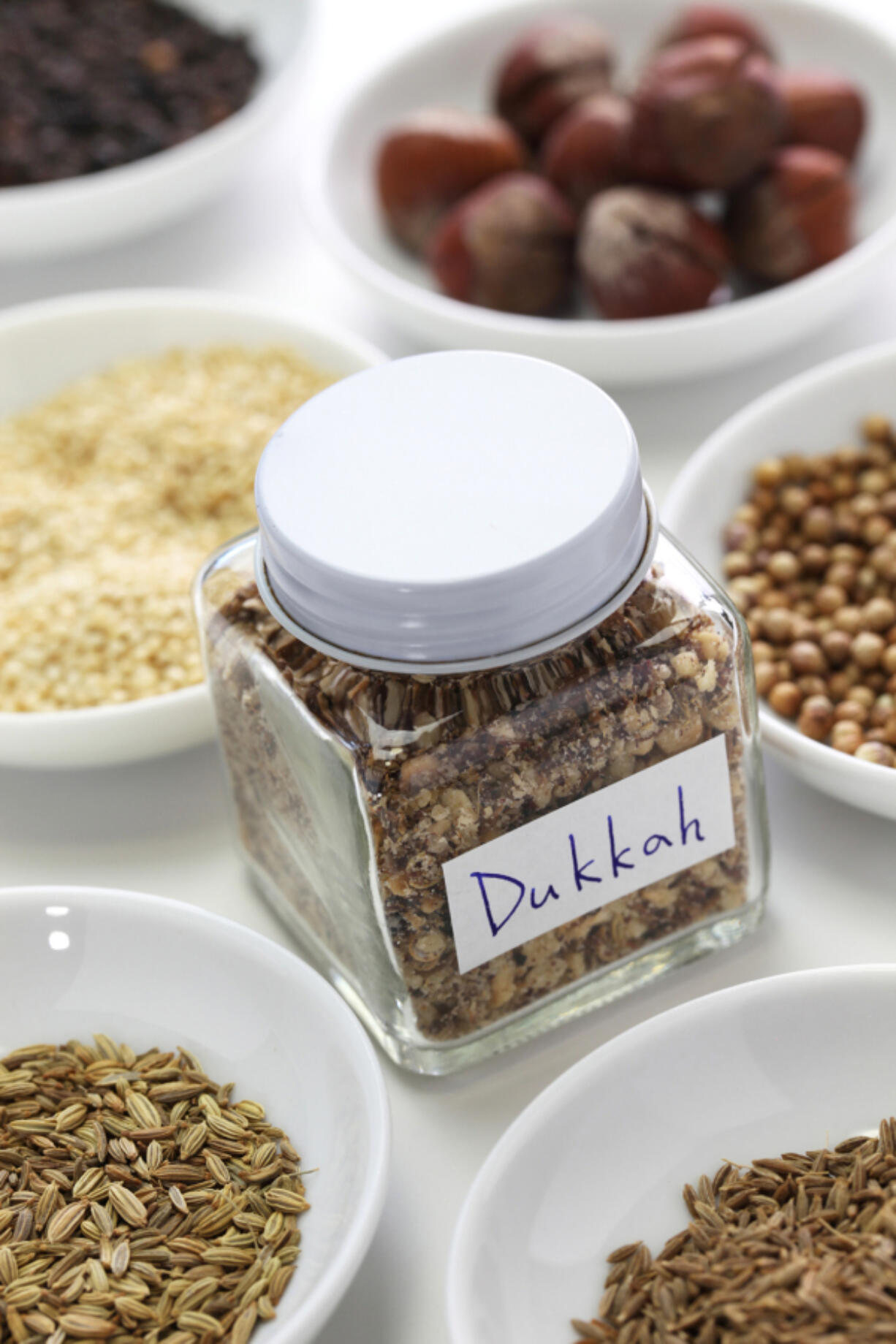I was introduced to dukkah, an Egyptian nut and spice blend, at a culinary conference years ago, and quickly became obsessed with this unique condiment and its warm spices. So much so that it’s become a pantry staple that finds its way into all kinds of dishes.
Although there are many variations, the most commonly used ingredients in dukkah are sesame seeds, coriander, cumin and coarsely ground nuts.
It’s most frequently used in Egypt alongside extra-virgin olive oil as a dip for warm bread, but dukkah is one of the most versatile condiments you’ll ever have in your kitchen. It can be used as a topping for hummus, yogurt dips or tahini sauce. Dukkah can be sprinkled over scrambled eggs, a green salad or avocado toast. It can be a crunchy coating for fish, chicken or beef. I love to brush lamb chops with pomegranate molasses and coat them in dukkah before roasting.
Dukkah also can be sprinkled over the top of roasted vegetables, as I do in this week’s recipe, Honey-Roasted Butternut Squash With Pistachio Dukkah.



